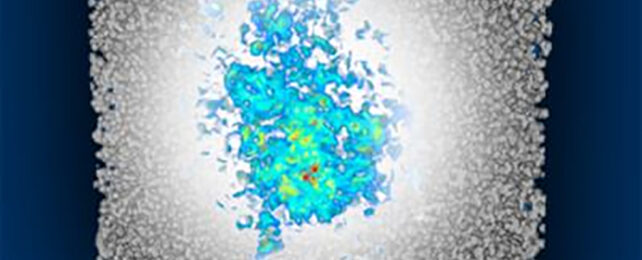Scientists have solved a decades-long mystery on whether light can be effectively trapped in a 3D forest of microscopic particles.
Using a new method for crunching vast sums in a model of particle interactions, a team of physicists in the US and France revealed conditions under which a wave of light can be brought to a standstill by defects in the right kind of material.
Known as Anderson localization, after US theoretical physicist Philip W. Anderson, electrons can become trapped (localized) in disordered materials with randomly distributed abnormalities. Its proposal in 1958 was a significant moment in contemporary condensed matter physics, applying across quantum as well as classical mechanics.
Where in the classical realm we'd imagine a point-like particle simply bouncing about like a pinball through a maze as it's scattered by defects, the wave-like quantum identity of a particle grows increasingly messy, forcing the electron to a stop and turning the material into an insulator.
A similar thing seems to happen as the electromagnetic waves making up light scatter through some substances, at least in one or two dimensions. Until now though, no one has been able to figure out if the physics hold in three dimensions (not through a lack of trying).
Finally, advances in calculation software and numerical simulations have meant that the mystery has been solved.
"We could not simulate large, three-dimensional systems because we don't have enough computing power and memory," says applied physicist and electrical engineer Hui Cao, from Yale University in Connecticut.
"People have been trying various numerical methods. But it was not possible to simulate such a large system to really show whether there is localization or not."
Using a new tool called FDTD Software Tidy3D, Cao and her colleagues were able to run calculations that would normally take days in just 30 minutes, speeding up the simulation process. The tool uses an optimized version of the finite-difference time-domain (FDTD) algorithm, which splits spaces up into grids and solves equations at each grid point.
The software also enabled different system configurations, sizes, and structural parameters to all be tested. The numerical simulation results obtained by the researchers were shown to be free of the artifacts that have been problematic in previous studies.
What the researchers found was that light couldn't be localized in 3D in dielectric (insulating) materials such as glass or silicon, which may explain why this has puzzled scientists for so long. However, there was clear numerical evidence of 3D Anderson localization in random packings of conductive metallic spheres.
"When we saw Anderson localization in the numerical simulation, we were thrilled," says Cao. "It was incredible, considering that there has been such a long pursuit by the scientific community."
The results give scientists a better idea of where to direct their research in the future, and a greater understanding of how 3D Anderson localization might and might not occur in different types of materials.
Part of that research effort will seek to observe the effect experimentally, evidence which has thus far remained "stubbornly elusive" to scientists. Cao and colleagues have proposed one possible experiment which they say would avoid past experimental pitfalls, and which they hope "provides a tell-tale sign of Anderson localization."
Further down the line, some of the fields where the discovery may be significant include the development of optical sensors, and the building of energy conversion and storage systems. For now though, we know that Anderson localization can work in three dimensions, some 65 years after it was first imagined.
"Three-dimensional confinement of light in porous metals can enhance optical nonlinearities, light-matter interactions, and control random lasing as well as targeted energy deposition," says Cao. "So we expect there could be a lot of applications."
The research has been published in Nature Physics.
